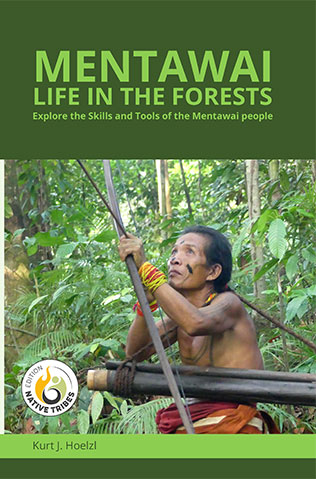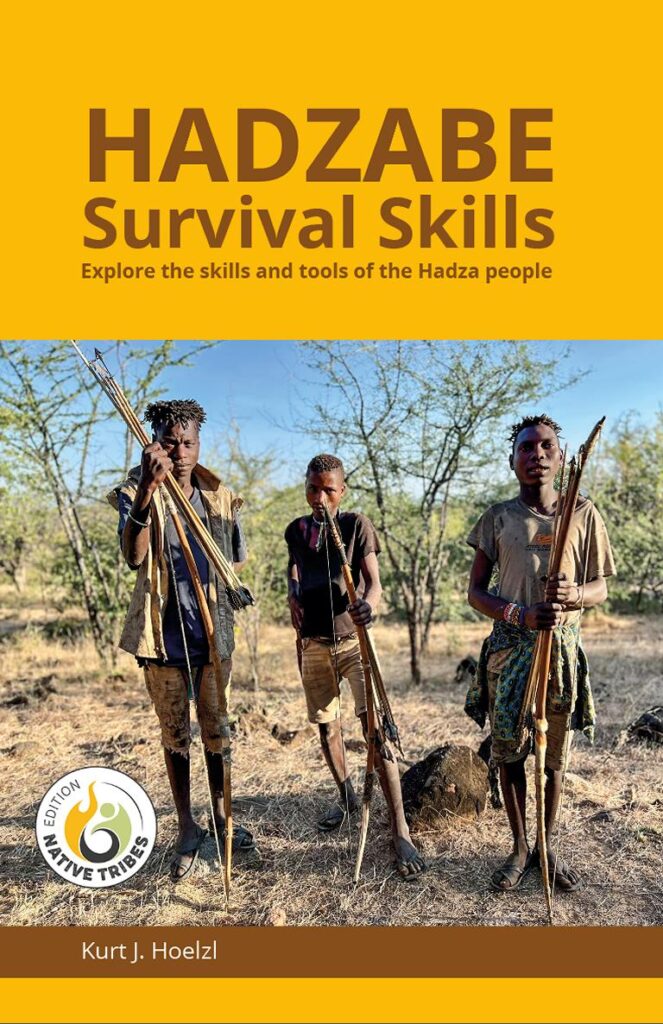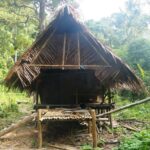The Datoga are pastoralist people living in various regions of northern Tanzania. Their estimated population is about 30,000. One of their main settlement areas is on the eastern shore of Lake Eyasi. Datoga settlement areas consistently face pressure from the Masai people, who are also pastoralists competing for grazing land. Cattle rustling is the favorite sport of some Masai warriors. Therefore, the Datoga people live close to their livestock to protect them from being stolen. In order to relieve the pressure from Masais, they, in turn, extend their living grounds into Hadza communal land. Hadza camps were discussed in this article.
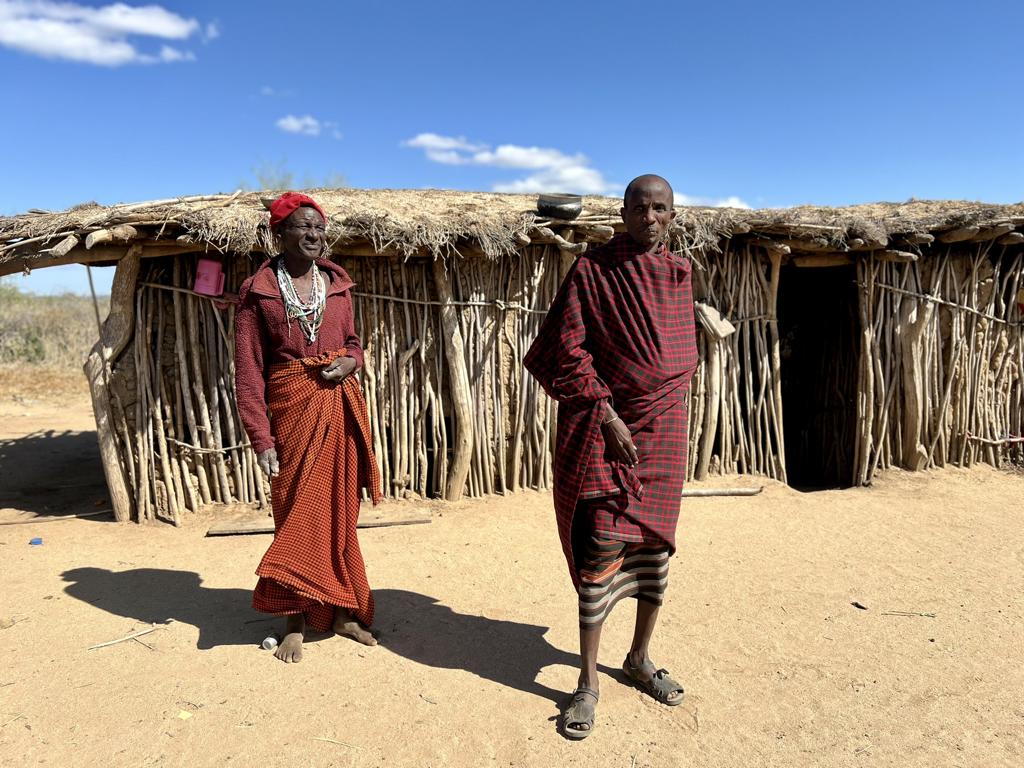
Layout of a Datoga homestead
Datogas’s livestock primarily consists of cattle and several donkeys for transport. Sheep or goats are also kept to generate cash if needed. Most often, money from selling sheep or goats is used to buy medicine or inoculations for the cattle. Datogas are generally very proud of their culture. They traditionally use two homesteads: a permanent base and a temporary one, which could be used for even longer than six months annually.

The permanent homestead consists of a wide circle of thornbush walls. Within this circle are the huts, separated from the cattle kraal by another thornbush fence.


The huts are typically made in a stick-and-mud (daub and wattle) design with a flat roof, which has been proven ideal for the climate for eons. Every homestead belongs to one family, and every wife of the family head has her own hut, where she lives with her kids.
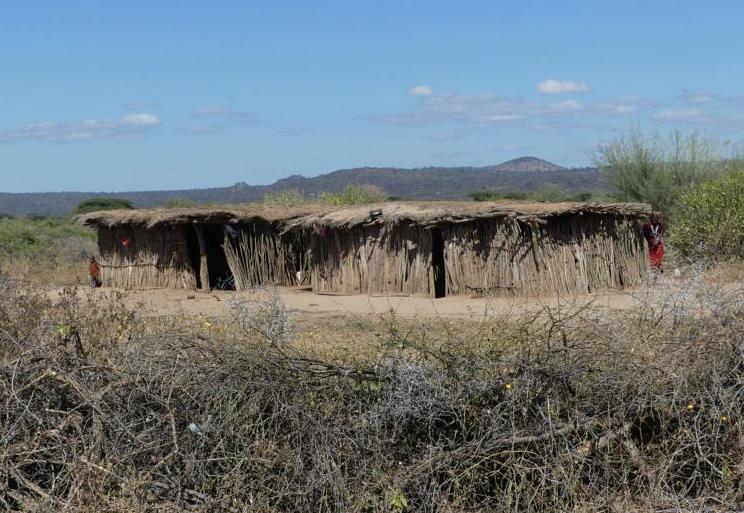
We met two brothers living with their families at one of the homesteads. Both had equal social standing.
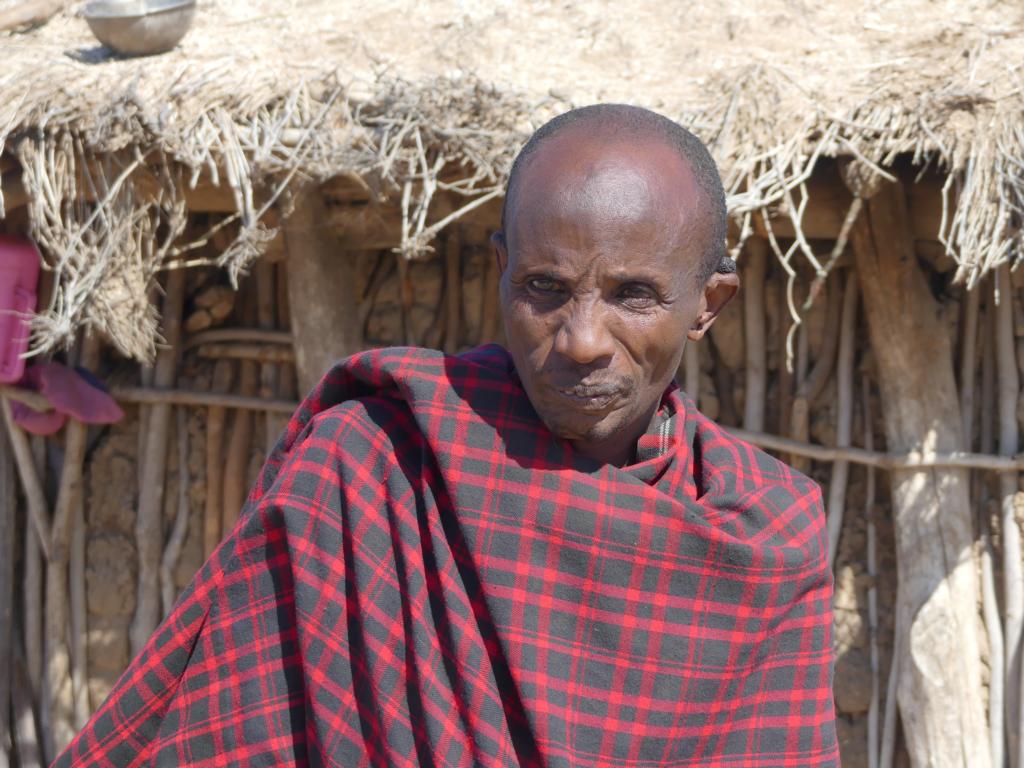
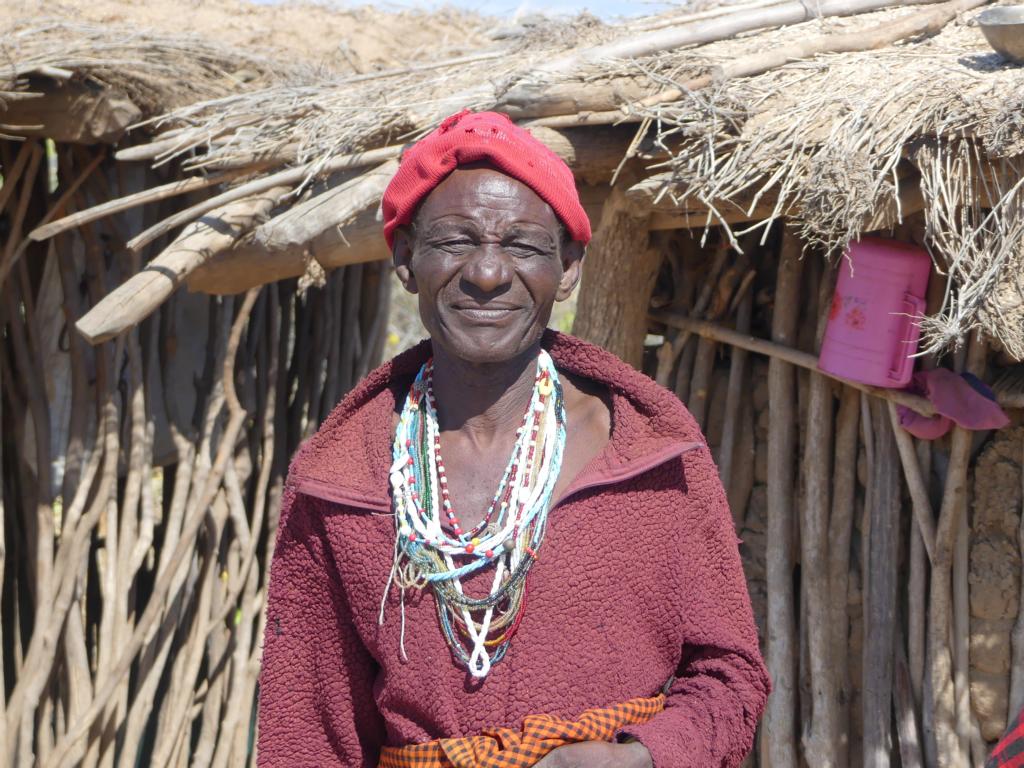
Outside the outer thornbush wall, Datoga people build a toilet for each family. The toilet is nothing more than a hole in the ground with a stick roof and walls.
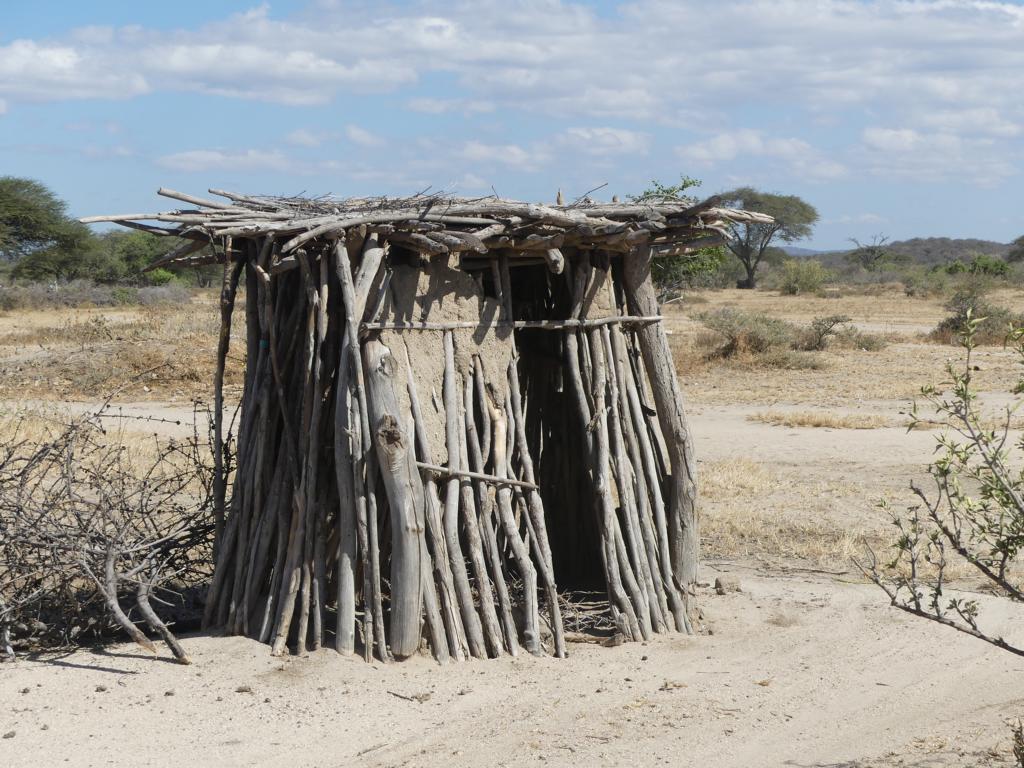
Traditional huts have no doors, and light shines through the stick walls. Modern huts, however, have got doors and windows. Moreover, sometimes even a satellite antenna.
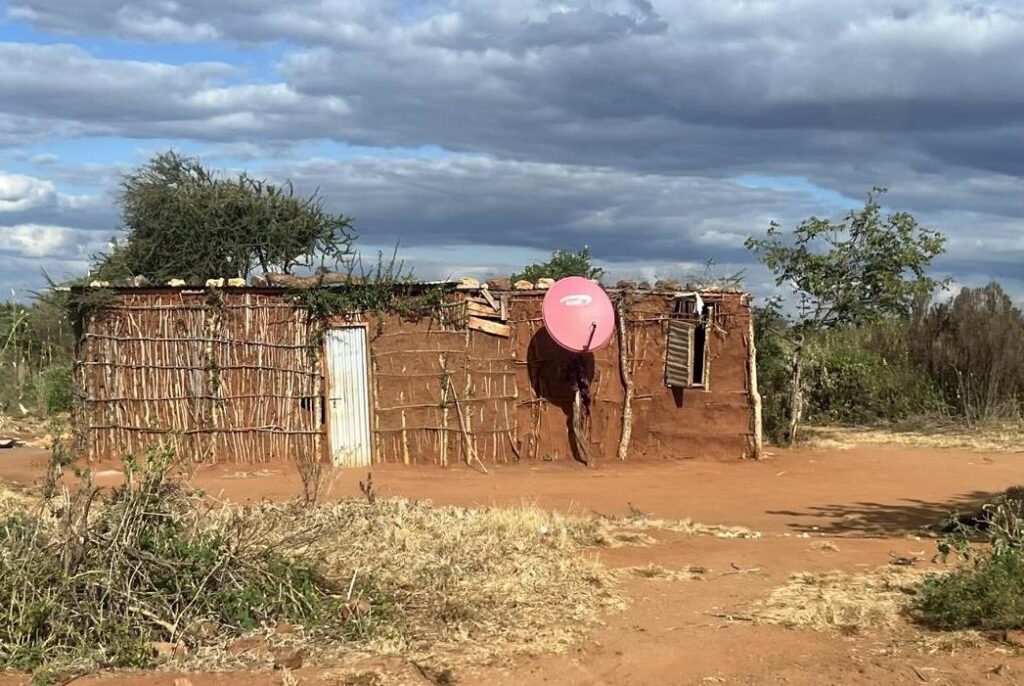
Building elements of traditional Datoga huts
Walls of Datoga huts

Wooden sticks create the walls, stuck into the soil, and avoiding lateral movements by horizontal sticks bound to the vertical ones.
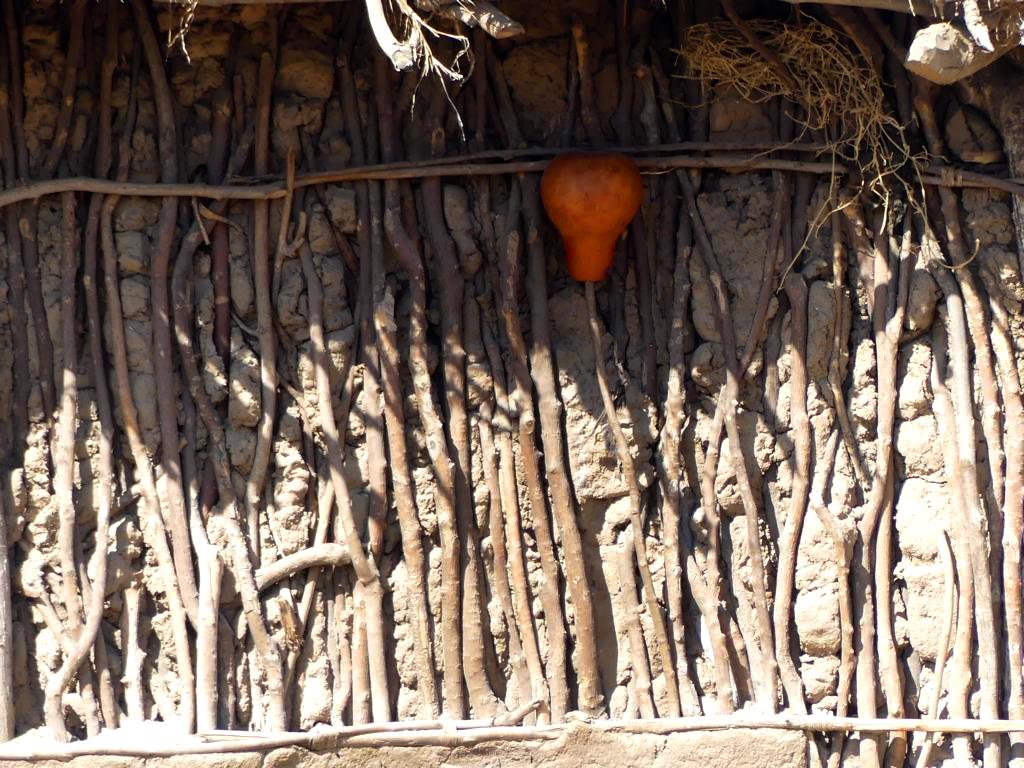
The ‘mud,’ which consists of 50% soil from the surrounding area, 30% cow dung, 20% ashes from the fires, and water, will be smeared into this wooden lattice.

If portions of the wall become too leaky after rain, the outside will also be plastered with this mud. This is repair work and not part of the initial wall building.
Roof of Datoga huts
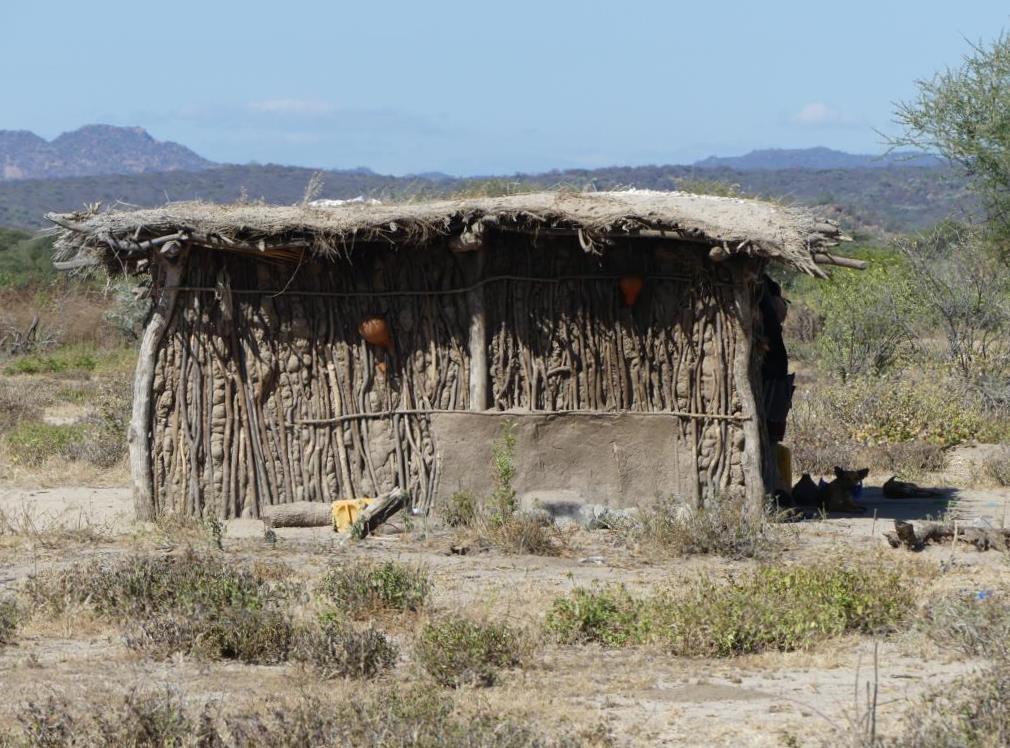
The roofs are built entirely flat. They provide a deep shadow in the blazing sun and are not built to protect from rain.
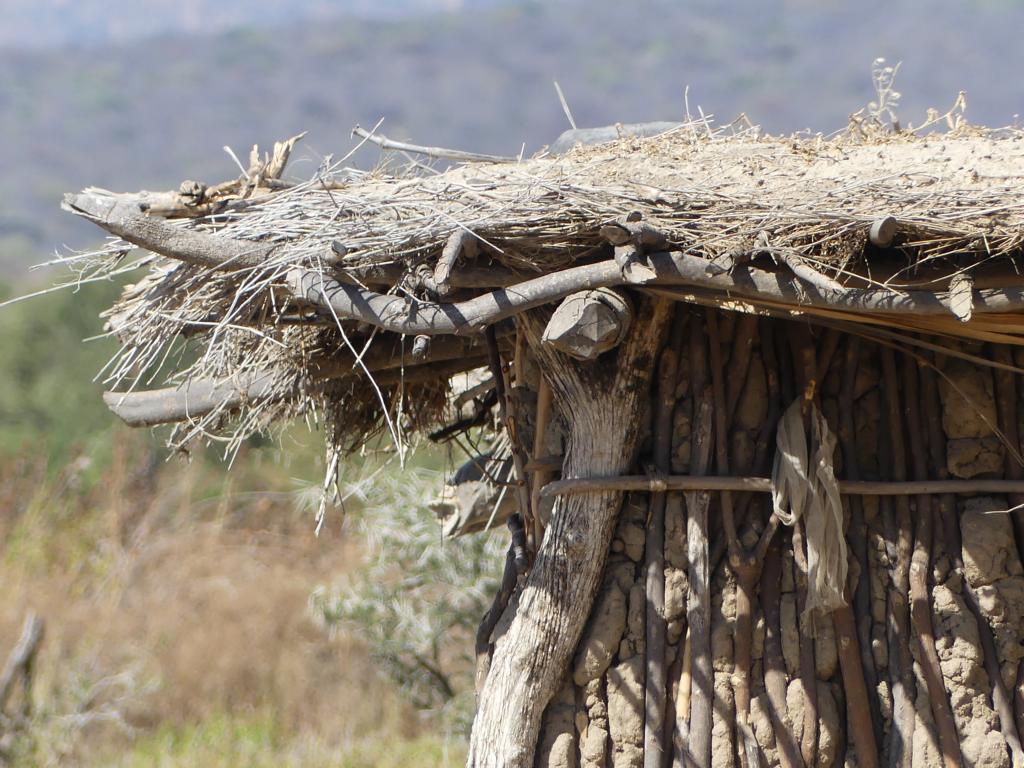
The hut corner props hold up the rafters, where a layer of thick sticks will be placed. A grass layer will be installed on top of this stick layer.
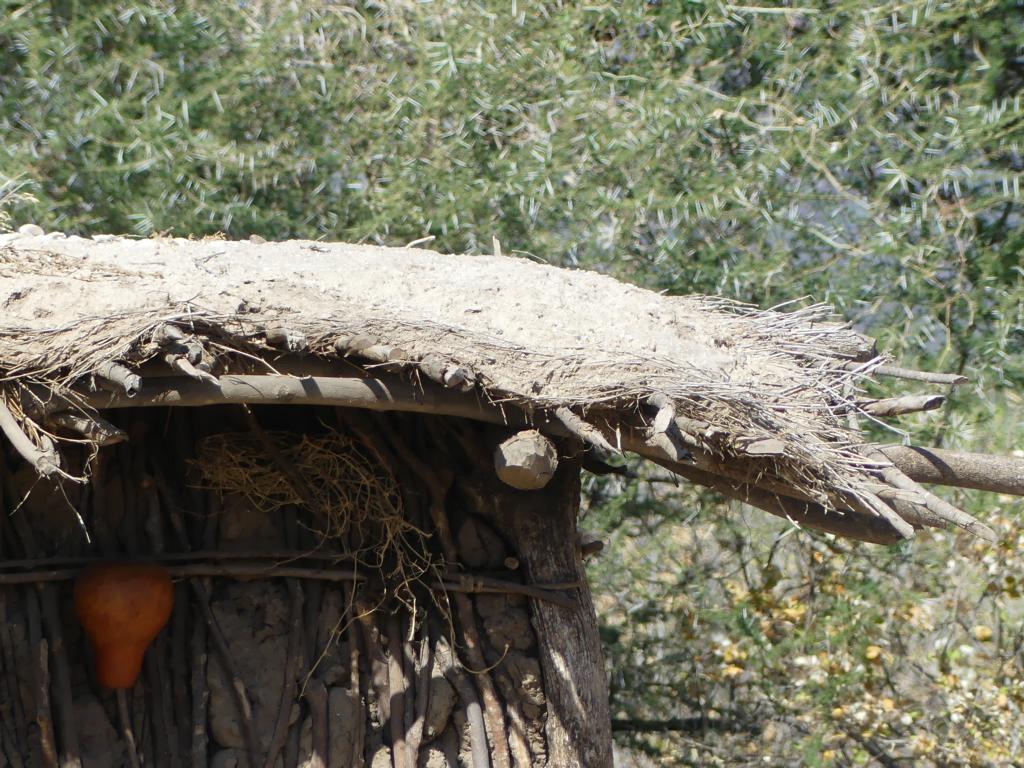
A 5 cm / 2’’ thick first mud layer will be added on top of this first grass layer. After that, a second layer of grass and a second layer of mud will finish off the roof covering.
Temporary homes
When Datoga people move their cattle to Hadza – or other communal land, they also build thorn kraals, where they keep their cattle at night. Instead of huts, they live under the stars within the kraal. There is no separation from the cattle, but the herders camp in a group near the kraal entrance. There, they sleep next to each other in a row. They cook there, play games, and have a good time. These kraals are big and have enough room for all their cattle, leaving them enough space to keep men and beasts apart by at least 20 meters.
Lessons learned from Datoga huts:
- Datoga huts are sturdy daub and wattle constructions with flat roofs.
- The mud for sealing walls and roofs consists of soil, cow dung, and ashes.
- The roofs are held up by rafters, which hold up a layer of sticks.
- On top of the sticks, a double layer of grass and mud is placed for the roof.
.

